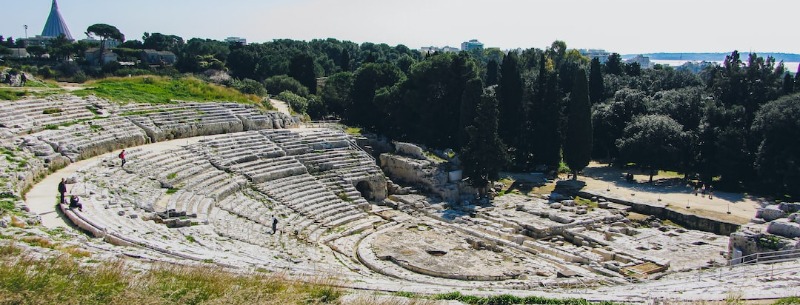Overview of Italy’s 58 UNESCO World Heritage Sites
Italy is home to 58 UNESCO World Heritage Sites, the most of any country on the World Heritage List. These sites have been identified and designated by UNESCO as having unique characteristics of particular importance for culture, archaeology, environment, or landscape.
From the majestic Dolomites in the north to the stunning Amalfi Coast in the south, Italy’s World Heritage Sites are nothing short of remarkable. Verona, San Gimignano, and Florence are all famous for their historic centers, while the archaeological sites of Pompeii, Herculaneum, and Torre Annunziata are some of the most famous archaeological sites in the world. The Villa D’Este at Tivoli and Hadrian’s Villa are also worth a visit.
For nature lovers, the Po River Delta and the Aeolian Islands are excellent areas to explore, while the Sassi of Matera is a must-see for those interested in rupestrian architecture and churches.
No matter what you’re looking for, Italy’s 58 UNESCO World Heritage Sites have something for everyone. Whether you’re interested in culture, archaeology, nature, or architecture, you’re sure to find something to love in Italy.
Why Italy is home to a large number of UNESCO World Heritage Sites
Italy is a country steeped in history, art, culture, and beauty. This is why it is home to a large number of UNESCO World Heritage Sites. From the ancient ruins of Pompeii to the iconic canals of Venice, Italy is a living museum that offers visitors a bounty of cultural treasures.
First, Italy is home to some of the most iconic archaeological sites in the world, including the Colosseum and the Roman Forum in Rome, the Greek ruins of Paestum near Naples, and the archaeological site of Herculaneum near Vesuvius. All three sites are listed on the UNESCO World Heritage List for their outstanding universal value.
The country is also full of exquisite old towns, a testament to its past. San Gimignano, Siena, and the walled city of Lucca are all listed as UNESCO World Heritage sites for their unique architecture and art. The ancient town of Matera is also listed for its extraordinary troglodyte dwellings which date back to prehistoric times.
In addition to its many stunning historic sites, Italy is also known for its spectacular art and churches. The stunning Leaning Tower of Pisa and the magnificent Basilica of St. Francis in Assisi are both parts of the UNESCO World Heritage List. The Renaissance city of Florence is home to works of art by Michelangelo, Brunelleschi, and Botticelli, and is also part of the list.
Finally, Italy is home to some of the most beautiful natural sites in the world. Val d’Orcia, which is nestled in the Tuscan hills, is listed as a UNESCO World Heritage Site for its spectacular landscapes. The Dolomites and the Aeolian Islands are also listed for their majestic landscapes.
Italy is a true cultural treasure trove, and its many UNESCO World Heritage Sites are a testament to that. From ancient ruins and magnificent churches to exquisite old towns and stunning natural sites, Italy has something for everyone. It’s no wonder that so many people flock to the country to experience its many wonders.
Top UNESCO World Heritage Sites in Italy
Italy is home to some of the world’s most beautiful and historically significant sites. From the rolling hills of Tuscany to the ancient ruins of Rome, Italy is a destination that offers an array of impressive UNESCO World Heritage Sites. These sites span multiple centuries and include archaeological remains, monuments, churches, and historic urban centers.
Pompeii and Herculaneum
Pompeii and Herculaneum, two ancient Roman cities lying near the Bay of Naples, are two of the most fascinating UNESCO World Heritage Sites in Italy. Both cities were destroyed by the eruption of Mount Vesuvius in 79 AD, burying them for almost 1700 years until their rediscovery in the late 18th century.

Pompeii was a thriving commercial port with a population of around 20,000 at the time of the eruption. It is now one of the most significant archaeological sites in the world, with its ruins providing an extraordinary insight into the Roman way of life. Visitors to Pompeii can explore the forum, amphitheater, temples, baths, houses, and even an ancient brothel.
Herculaneum, although smaller than Pompeii, was wealthier and more elegant. It was also buried in ash and rock during the eruption and has been painstakingly excavated to reveal an array of beautiful villas and buildings, including the House of the Faun, which features intricate mosaics and frescoes.
Pompeii and Herculaneum are both incredibly important archaeological sites that provide a vivid insight into ancient Roman life. Despite being destroyed by the same volcanic eruption, the two cities have remarkably distinct character and appeal that visitors can explore.
What makes Pompeii and Herculaneum even more remarkable is that almost 2000 years after their destruction, the two cities are still incredibly well preserved. This is thanks to the thick layers of ash and rock that sealed them, particularly in the case of Herculaneum, which was buried deeper than Pompeii.
These two incredible UNESCO World Heritage Sites are a must-visit for any traveler to Italy. The ruins offer an immersive insight into the everyday life of the ancient Romans, as well as a unique window into the past.
Botanical Garden of Padua
The Botanical Garden of Padua, or the Giardino dell’Orto Botanico di Padova in Italian, is one of the oldest and most important botanical gardens in the world and has been recognized by UNESCO as a World Heritage Site since 1997.
The Garden, which sprawls over more than 12 hectares of land, was founded in 1545 by the Venetian Republic and was the first of its kind. It was established as a horticultural and botanical garden, primarily to cultivate medicinal plants; it was also intended to be a center of teaching and research, although this aspect of the Garden’s purpose was not fully realized until the following century.
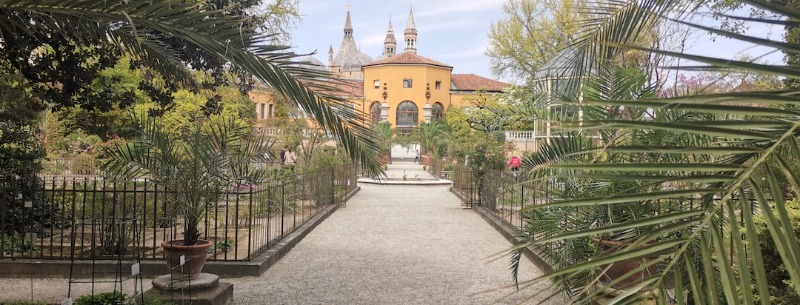
The Garden has been at the forefront of botanical studies for centuries and, in 1810, it became the home of the world’s first botanical institute. Amongst its many achievements, the Garden was the first to grow coffee plants from seeds and the first to classify plants according to their taxonomic order.
Today, the Garden houses over six thousand species of plants, and its collections include some of the most important botanical specimens in the world. In addition to its rich history, the Garden is renowned for its plants, which range from the rarest of wild species to the latest varieties of ornamental plants.
The Garden features a number of distinct areas, including a pond, an herb garden, and a cactus garden. It also has an open-air theatre and several greenhouses. There are also several exhibitions and events held at the Garden, and visitors can learn more about the Garden’s history and its plants through guided tours.
The Botanical Garden of Padua is an important site of Italian history and culture and is a must-see destination for anyone interested in botany, horticulture, and the history of Italy. With its rich history, extensive collections, and exceptional beauty, it’s easy to understand why this incredible site is one of the UNESCO World Heritage Sites in Italy.
Santa Maria Delle Grazie
The Church and Dominican Convent of Santa Maria Delle Grazie is a 15th-century monastery located in Milan, Italy. It is a UNESCO World Heritage Site and one of the most important monuments of early Renaissance architecture in the country.
The first church and convent were founded in 1482 by Ludovico Sforza, the Duke of Milan. The complex was designed by architect Donato Bramante and completed in 1497. It consists of a large central nave with a barrel vault and two side aisles, which are divided by Corinthian columns. The interior is decorated with beautiful frescoes by artists such as Leonardo da Vinci, Andrea Solari, and Bernardino Luini.

The exterior of the church and convent is characterized by a brick façade, with a large rose window, and the bell tower, which was added by Bramante in the early 16th century.
The Church and Dominican Convent of Santa Maria Delle Grazie is a unique example of early Renaissance architecture in Italy. Its simple, sober decoration and grand proportions reflect the ideas of the Renaissance, which sought to create a more naturalistic setting for religious art.
The church and convent are also home to one of the most important works of art in the world – Leonardo da Vinci’s “The Last Supper”. The painting was commissioned by Ludovico Sforza in 1495 and completed in 1498. It is one of the most famous and most reproduced works of art in all of history.
The Church and Dominican Convent of Santa Maria Delle Grazie is a must-see for all visitors to Milan. It is a testament to the power of Renaissance art and architecture and a reminder of the importance of preserving our cultural heritage.
Caserta Palace
The Caserta Palace in Italy is one of the most impressive and impressive World Heritage Sites in Italy. Built in the mid-1700s, the palace was designed to be the royal residence of the Kings of Naples and Sicily. Located just 30 kilometers north of Naples, the palace is the largest royal residence in the world.
The palace was built by the great architect Luigi Vanvitelli, an Italian Baroque architect. He designed the palace in the Baroque style, with a stunning facade, numerous grand rooms, and an impressive park that surrounds the palace. The park was designed in the English style, with large green lawns, lakes, and winding driveways.

Inside the palace, visitors will find a grand staircase, dozens of grand and opulent rooms, and breathtakingly beautiful frescoes. The palace is also home to a large theater, which hosted the first ballet performance in Italy. The royal apartments are also a must-see. There are several floors of grand suites, each decorated differently and each with its own unique touches.
The Caserta Palace is also a great place to explore the history of the Naples region. In the palace, visitors can explore a vast collection of artifacts related to the region’s history, including artifacts from the Roman Empire, the Renaissance, and the Baroque period.
The palace is also home to a beautiful park, which is home to many rare plants and animals. Visitors can spend a day exploring the grounds, admiring the flora and fauna, and taking in the beautiful views of the surrounding countryside.
The Caserta Palace was added to the UNESCO World Heritage Sites in 1997 and is a must-see for anyone visiting Italy. This magnificent palace is a testament to the beauty of the Italian Baroque and a reminder of the importance of preserving historic sites.
Etruscan Necropolises of Cerveteri and Tarquinia
The Etruscan Necropolises of Cerveteri and Tarquinia are some of the most spectacular archaeological sites in the world. Located in the Lazio region of Italy, these two sites are the most important and best-preserved examples of pre-Roman funerary architecture and have been declared World Heritage Sites by UNESCO in 2004.
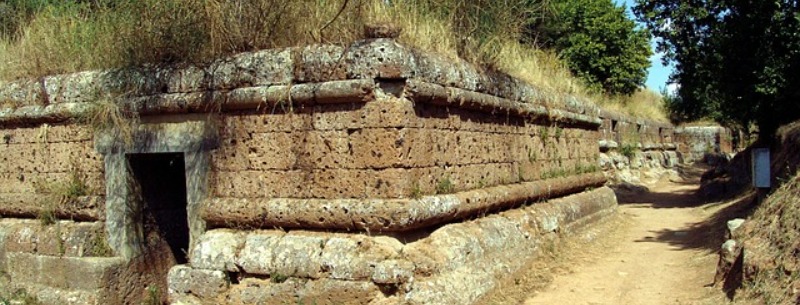
The two necropolises are the burial grounds of the Etruscan people, who lived in this region of Italy from the 8th to the 1st centuries BCE and were eventually absorbed by the Roman Empire. The two sites are located near the ancient cities of Cerveteri and Tarquinia and are believed to have been used by the Etruscans for over 500 years.
At the Etruscan Necropolis of Cerveteri, visitors can explore a vast network of tombs that have been carved into the soft tuff or volcanic stone. These tombs are of two main types: the “cubiculum”, a small, private chamber, and the “Tomba di Osario”, a much larger, community tomb. The tombs are also decorated with frescoes, sculptures, and inscriptions that tell the stories of the people buried within.
At the Etruscan Necropolis of Tarquinia, visitors can explore a large and complex network of tombs. These tombs are decorated with frescoes, stucco, and sculptures that tell the stories of the people buried within. The tombs feature a variety of designs, from large, elaborate chambers to small, private chambers, and range from simple to complex.
Both Cerveteri and Tarquinia offer visitors the chance to explore the fascinating history of the Etruscans and gain insight into their culture and beliefs. Whether you’re looking for a day trip or an overnight stay, these two sites are sure to provide an unforgettable experience.
City of Verona
Verona, Italy, is a city of immense beauty, history, and culture. This small city of around 250,000 people is a popular tourist destination, and it has something for everyone. From its incredible architecture to its world-famous opera house, Verona has something to offer everyone.
Verona’s two UNESCO World Heritage Sites are the Verona Arena and the Verona Cathedral. The Arena is one of the largest amphitheaters in the world, and it was built in the first century AD. This remarkable building has survived the test of time, and it is still used today for performances and events. There are also many special events held in the Arena throughout the year, such as the annual Verona Opera Festival.
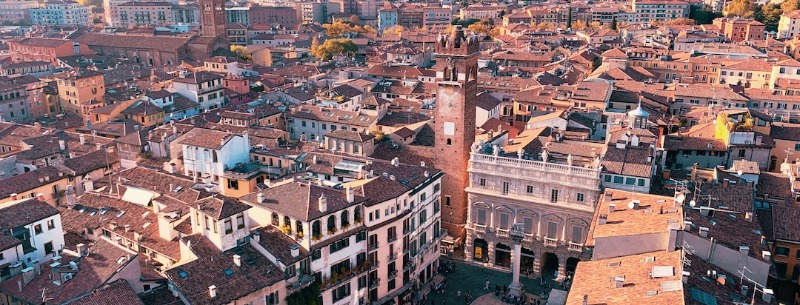
The Verona Cathedral is another impressive sight in Verona. This enormous Gothic-style cathedral was built in the 13th century, and it is one of the most iconic landmarks in the city. The interior of the cathedral is stunning and notable features include its stained glass windows, detailed sculptures, and frescoes. The Cathedral is a popular destination for tourists who want to experience the beauty and culture of this city.
In addition to its two UNESCO World Heritage Sites, Verona has many other attractions that are worth visiting. Juliet’s House is a popular spot for tourists, as it is the house that was made famous by the play Romeo and Juliet. The Scaliger Tombs, located in the center of town, are also a must-see site, as they were built in the 13th century to honor the Scaliger family.
Amalfi Coast
The Amalfi Coast of Italy is one of the most spectacular and beautiful places on the planet. With its stunning views and crystal clear waters, the Amalfi Coast has become a hot spot for tourists looking to experience the best of Italy. But what makes this place so special?
The Amalfi Coast is home to five UNESCO World Heritage Sites, each of which provides a unique and unforgettable experience. First, there is the Amalfi Coast National Park, which covers a stretch of coastline from Positano to Vietri Sul Mare. Here, hikers can explore a variety of trails and observe a variety of wildlife, from lizards and butterflies to foxes and badgers.
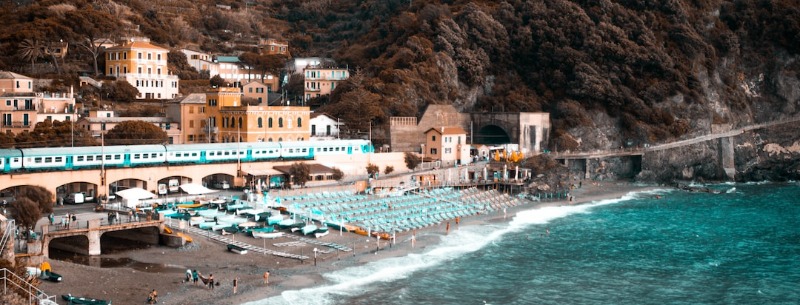
Next, the Amalfi Coast is home to the beautiful island of Capri. This small island is located in the middle of the Mediterranean Sea and features stunning views of the surrounding coastline. Visitors can explore the picturesque streets of Capri Town and take in the island’s many attractions, such as the Faraglioni and the Blue Grotto.
The third UNESCO World Heritage Site is the Archipelago of the Li Galli Islands, located off the coast of Positano. This archipelago of three small islands is home to some of the most spectacular views and landscapes in the area. Visitors can take a boat tour of the islands and explore the unique and diverse wildlife that can be found here.
The fourth UNESCO World Heritage Site is the historic town of Amalfi. This charming town is a great place to visit, with its narrow cobblestone streets, stunning churches, and stunning views of the surrounding coastline. Visitors can stroll through the town and visit the Duomo, a stunning cathedral.
Finally, the fifth UNESCO World Heritage Site is the Amalfi Coast Regional Nature Park, which covers the entire Amalfi Coast. This park is home to a variety of natural landscapes, including forests, cliffs, and beaches. There are also some archaeological sites to be found here, such as the ruins of the ancient Roman port of Stabiae.
The Amalfi Coast is one of the most beautiful and unique places in the world. With its UNESCO World Heritage Sites, it is easy to see why this stunning place is so popular. Whether you’re looking for outdoor activities or cultural attractions, the Amalfi Coast has something for everyone. So why not take a trip to this amazing place and experience the beauty of the Amalfi Coast for yourself?
Villa d’Este Palace
The Villa d’Este Palace is an awe-inspiring, 16th-century Italian Renaissance palace located in Tivoli, Italy. It’s a magnificent example of the high level of art and culture that was produced during the Renaissance period. Its stunning beauty and intricate design have made it a UNESCO World Heritage Site, earning it protection for future generations to enjoy.
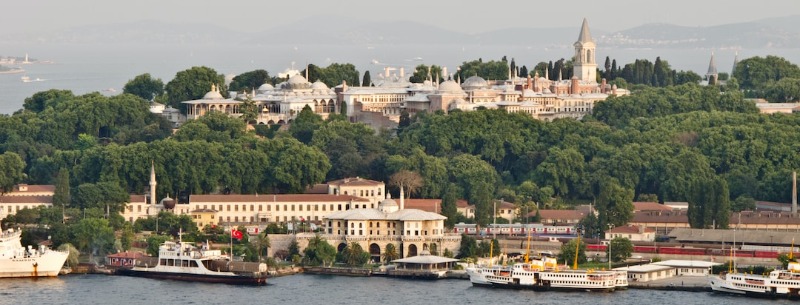
This grand estate has sumptuous gardens with more than 500 fountains and waterworks nestled among lush lawns, rose bushes, and exotic shrubbery. Visitors can also explore numerous grottoes built into the walls alongside breathtaking architecture such as terraces, staircases, and loggias that are adorned with ornate sculptures and frescoes. The majestic Villa d’Este Palace is one of Italy’s most treasured landmarks that captures the essence of this extraordinary period in history.
The Dolomites
The Dolomites are a mountain range located in northeastern Italy, and they have been officially recognized as a UNESCO World Heritage Site. This stunning natural landscape is home to some of the most rugged and beautiful terrain in Europe. From soaring peaks to lush valleys, the Dolomites offer visitors plenty of diverse landscapes to explore.
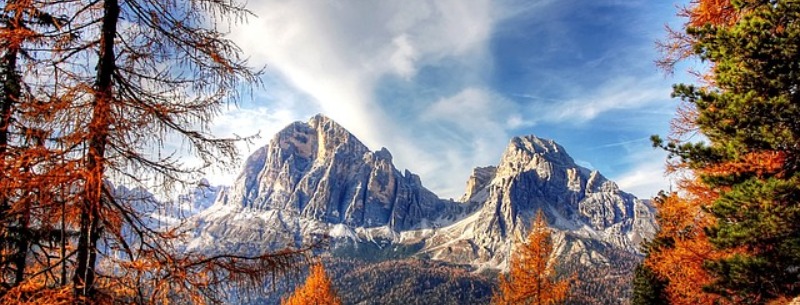
In addition to its stunning vistas, the Dolomites also feature an incredible array of wildlife. Marmots, chamois, ibexes, and birds such as eagles can all be found here. For hikers looking for a challenge, these mountains boast dozens of trails ranging from easy hikes suitable for beginners to more challenging endeavors that require specialized mountaineering equipment. The area also offers numerous opportunities for skiing or snowboarding in the winter months.
Mount Etna
Mount Etna is the largest active volcano in Europe and a UNESCO World Heritage Site located on the east coast of Sicily, Italy. The volcano has been characterized by frequent eruptions throughout its history, with at least 20 major eruptions occurring since 1500 BC. Despite this activity, Mount Etna is still home to a wide array of wildlife and vegetation.

Its slopes are filled with plants ranging from chestnut trees to vineyards as well as some rare endemic species like the Etna Wall Lizard and the Pine Marten. In addition, Mount Etna’s summit provides an ideal habitat for mountain birds such as crows, ravens, and golden eagles. Mount Etna’s diverse ecosystem makes it an important natural resource for both humans and animals alike.
Historic Center of Rome
The Historic Center of Rome is one of Italy’s most iconic sites. This iconic UNESCO World Heritage Site is located in the heart of Rome and includes some of the city’s most famous landmarks, including the Colosseum, Trevi Fountain, and Pantheon. It offers an amazing combination of history, culture, and art from Ancient Rome through to today.
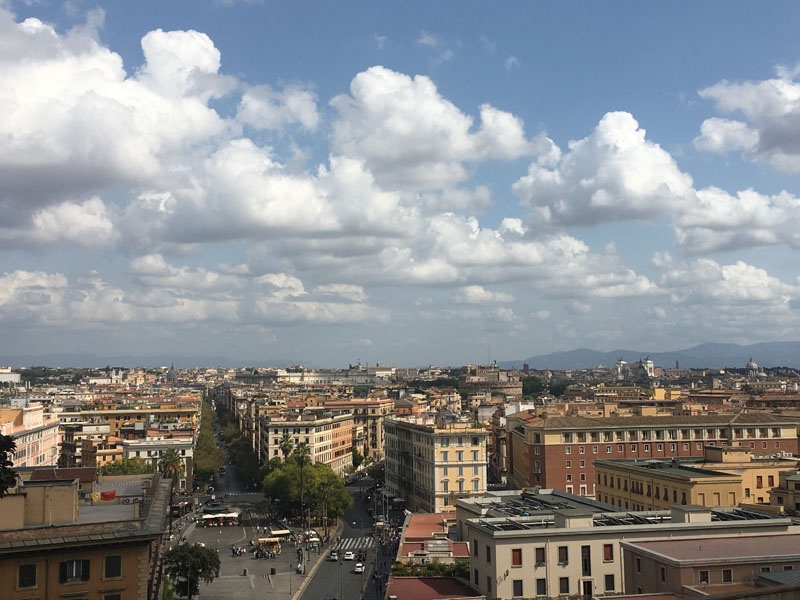
The area holds a wealth of historic monuments that are a testament to its past as the seat of power for the Roman Empire. Visitors can explore churches, palaces, gardens, squares, and other structures that were built during this period. Sites such as St Peter’s Basilica, Castel Sant’Angelo, and Piazza Navona capture the essence of Renaissance architecture while The Forum and Colosseum provide a glimpse into Ancient Rome.
Conque Terre
Conque Terre is a UNESCO World Heritage Site located in the northwest region of Italy. This stunning natural landscape is known for its incredible diversity and breathtaking views, making it an ideal destination for outdoor enthusiasts. Conque Terre consists of five distinct villages – Monterosso al Mare, Vernazza, Corniglia, Manarola, and Riomaggiore – that are connected by footpaths along the rugged coastline. Each village offers something unique to visitors with its picturesque harbors, vibrant colors, and narrow cobblestone streets.
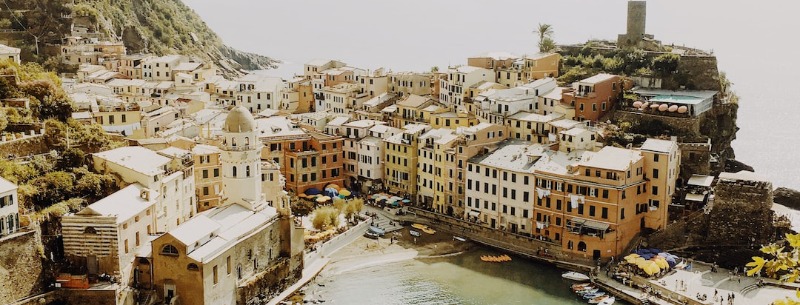
The beauty of Conque Terre lies in its spectacular emerald waters that lap up against colorful cliff-side houses.
Crespi d’Adda
Crespi d’Adda is a small village located near Bergamo, in Northern Italy. The quaint community was built by Cristoforo Benigno Crespi, an industrialist from Milan in the late 19th century. It is today considered a UNESCO World Heritage Site for its historical and architectural significance.

The village of Crespi d’Adda was designed with high levels of hygiene and comfort for workers at the cotton mill to ensure their well-being. It included housing, a church, a sports ground, a theatre, and even its own cemetery – all features that have been preserved to this day. This unique layout makes Crespi d’Adda one of the most important examples of philanthropic working-class architecture in Europe; it has been described as having “strong links with the period’s reform movements”.
Exploring the Sites
Exploring Italy’s World Heritage Sites is a great way to immerse yourself in the country’s culture and history. With 51 sites, it can be difficult to know where to start. To help you make the most of your trip, here are some tips for exploring each of the World Heritage Sites in Italy.
When planning your route around Italy, take into consideration how much time you want to spend at each site. You don’t want to rush from place to place without taking enough time to appreciate the beauty of each one. Also, consider what type of activities you will have time for—will you have time for guided tours or just self-guided exploration?
Tips for exploring the World Heritage Sites in Italy
- Research Before You Go
- Pack Appropriately
- Familiarize Yourself with Local Customs
- Invest in a Good Guidebook
- Take it Slow and Enjoy the Journey
- Don’t Forget to Document Your Adventures
Research which sites offer special access or discounts such as reduced admission prices if available.
Suggested itineraries for visiting the sites
- Exploring Italy’s Historic Cities
- Discovering Ancient Architecture in Italy
- Exploring the Wonders of Rome
- Exploring Renaissance Treasures in Florence
- Visiting the Historic Sites of Venice
- Uncovering the Rich History of Naples
- Wonders of the Amalfi Coast
- Ancient Ruins of Rome
- Pompeii – A Journey Through Time
- Savouring Northern Italy’s Delights
- Take a Trip to Tuscany
List of World Heritage Sites in Italy
Italy UNESCO Cultural Heritage Sites
- 18th-Century Royal Palace at Caserta with the Park, the Aqueduct of Vanvitelli, and the San Leucio Complex – Campania
- Arab-Norman Palermo and the Cathedral Churches of Cefalú and Monreale – Sicily
- Archaeological Area and the Patriarchal Basilica of Aquileia – Friuli-Venezia Giulia
- Archaeological Area of Agrigento – Sicily
- Archaeological Areas of Pompei, Herculaneum and Torre Annunziata – Campania
- Assisi, the Basilica of San Francesco and Other Franciscan Sites – Umbria et al
- Botanical Garden (Orto Botanico), Padua – Veneto
- Castel del Monte – Puglia
- Cathedral, Torre Civica and Piazza Grande, Modena – Emilia-Romagna
- Church and Dominican Convent of Santa Maria Delle Grazie with “The Last Supper” by Leonardo da Vinci – Lombardy
- Cilento and Vallo di Diano National Park with the Archeological Sites of Paestum and Velia, and the Certosa di Padula – Campania
- City of Verona – Veneto
- City of Vicenza and the Palladian Villas of the Veneto
- Costiera Amalfitana – Campania
- Crespi d’Adda – Lombardy
- Early Christian Monuments of Ravenna – Emilia-Romagna
- Etruscan Necropolises of Cerveteri and Tarquinia – Lazio
- Ferrara, City of the Renaissance, and its Po Delta – Emilia-Romagna
- Genoa: Le Strade Nuove and the system of the Palazzi dei Rolli – Liguria
- Historic Centre of Florence – Tuscany
- Historic Centre of Naples – Campania
- Historic Centre of Rome, the Properties of the Holy See in that City Enjoying Extraterritorial Rights and San Paolo Fuori le Mura – Lazio
- Historic Centre of San Gimignano – Tuscany
- Historic Centre of Siena – Tuscany
- Historic Centre of the City of Pienza – Tuscany
- Historic Centre of Urbino – Le Marche
- Ivrea, Industrial city of the 20th century – Piemonte
- Late Baroque Towns of the Val di Noto – Sicily
- Longobards in Italy. Places of the Power (568-774 A.D.) – Includes sites in Campania, Friuli-Venezia Giulia, Lombardy, Puglia, and Umbria
- Mantua and Sabbioneta – Lombardy
- Medici Villas and Gardens in Tuscany
- Montecatini Terme, one of the Great Spa Towns of Europe (Tuscany
- Padova Urbs Picta – Veneto
- Piazza del Duomo, Pisa – Tuscany
- Porticoes of Bologna – Emilia-Romagna
- Portovenere, Cinque Terre, and the Islands (Palmaria, Tino and Tinetto) – Liguria
- Prehistoric Pile Dwellings around the Alps – Lombardy, Piemonte, Trentino-Alto Adige
- Prosecco Hills of Conegliano e Valdobbiadene – Veneto
- Residences of the Royal House of Savoy – Piemonte
- Rhaetian Railway in the Albula / Bernina Landscapes – Lombardy
- Rock Drawings in Valcamonica – Lombardy
- Sacri Monti of Piedmont and Lombardy
- Su Nuraxi di Barumini – Sardinia
- Syracuse and the Rocky Necropolis of Pantalica – Sicily
- The Trulli of Alberobello – Puglia
- The Sassi and the Park of the Rupestrian Churches of Matera – Basilicata
- Val d’Orcia – Tuscany
- Venetian Works of Defence between the 16th and 17th Centuries: Stato da Terra – Western Stato da Mar – Veneto
- Venice and its Lagoon – Veneto
- Villa Adriana – Tivoli) (Lazio
- Villa d’Este, Tivoli (Lazio
- Villa Romana del Casale – Sicily
- Vineyard Landscape of Piedmont: Langhe-Roero and Monferrato
Italy UNESCO Natural Heritage Sites
- Ancient and Primeval Beech Forests of the Carpathians and Other Regions of Europe – includes forests in Abruzzo, Basilicata, Calabria, Emilia-Romagna, Lazio, Puglia
- Isole Eolie (Aeolian Islands) – Sicily
- Monte San Giorgio – Lombardy, shared with Switzerland
- Mount Etna – Sicily
- The Dolomites – Friuli-Venezia Giulia, Trentino Alto-Adige, Veneto
• List of each World Heritage Site in Italy
• Information about each site, including character, relevance, and significance to UNESCO
Exploring the Sites:
• Tips for exploring each of the World Heritage Sites in Italy
• Suggested itineraries for visiting the sites
• Resources for further exploration
Final Word
UNESCO World Heritage Sites in Italy are an invaluable resource for learning about the country’s culture, as well as its contributions to world history. From the Colosseum to Mount Etna, these sites offer a unique insight into Italian life and culture. They also serve as monuments to past civilizations and showcase Italy’s art, architecture, and technology. Not only are these sites important to Italians, but they also provide an international audience with a wonderful opportunity to explore and appreciate Italy’s unique beauty and history.
